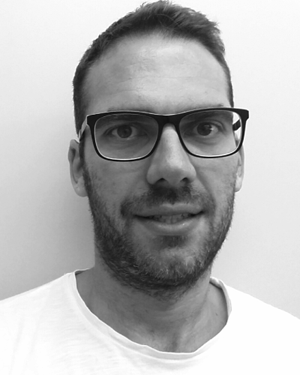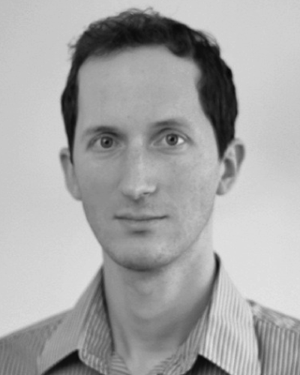Abstract:
This work addresses the problem of inferring student performance from information acquired in a Learning Management System (LMS). In particular, we explore the capabiliti...Show MoreMetadata
Abstract:
This work addresses the problem of inferring student performance from information acquired in a Learning Management System (LMS). In particular, we explore the capabilities offered by Moodle, a widely used LMS. The study is performed on data acquired from four classes within the same subject, for whom we make inferences about student performance marks. The developed methodology describes the degree in which the acquired information allows to predict the student marks belonging to the continuous evaluation, while the prediction of the final students marks has a higher intrinsic complexity that would require a more in- depth study of the relevant variables. Then, we follow a fully data-driven process to discover similarities among classes. In particular, we propose the use of a dependence estimation measure, the normalized Hilbert-Schmidt Independence criterion. We show how this dependence measure is useful to determine relations among classes, based on their particular teaching methodology, by only using data acquired from the LMS. This opens the door to explore the capabilities of LMS in similarity search between offered courses along an educational platform. In order to help the community and serve as a common way of comparison, we provide the source code of the proposed methodology.
Published in: IEEE Revista Iberoamericana de Tecnologias del Aprendizaje ( Volume: 18, Issue: 1, February 2023)
Funding Agency:

Departament de Didàctica de la Matemàtica, Universitat de València, València, Spain
Adrián Pérez-Suay received the B.Sc. degree in mathematics, the master’s degree in advanced computing and intelligent systems, and the Ph.D. degree in computational mathematics and computer science from Universitat de València in 2007, 2010, and 2015, respectively. He is currently an Assistant Professor with the Department of Mathematics Education, Universitat de València.
Adrián Pérez-Suay received the B.Sc. degree in mathematics, the master’s degree in advanced computing and intelligent systems, and the Ph.D. degree in computational mathematics and computer science from Universitat de València in 2007, 2010, and 2015, respectively. He is currently an Assistant Professor with the Department of Mathematics Education, Universitat de València.View more

Departamento de Matemáticas, Estadística y Computación, Universidad de Cantabria, Santander, Spain
Steven Van Vaerenbergh (Senior Member, IEEE) received the M.Sc. degree in electrical engineering from Ghent University, Belgium, in 2003, and the Ph.D. degree from Universidad de Cantabria, Spain, in 2010. He is currently an Assistant Professor with the Department of Mathematics, Statistics and Computing. His research interests include the use of artificial intelligence in mathematics education, particularly in technologi...Show More
Steven Van Vaerenbergh (Senior Member, IEEE) received the M.Sc. degree in electrical engineering from Ghent University, Belgium, in 2003, and the Ph.D. degree from Universidad de Cantabria, Spain, in 2010. He is currently an Assistant Professor with the Department of Mathematics, Statistics and Computing. His research interests include the use of artificial intelligence in mathematics education, particularly in technologi...View more

Departament de Didàctica de la Matemàtica, Universitat de València, València, Spain
Pascual D. Diago is currently an Associate Professor with the Department of Didactics of Mathematics, Universitat de València. He also teaches teaching degrees in early childhood education, primary education, and in the master’s degree in research in specific didactics. His research interests include problem-solving and the use of new technologies in the teaching-learning processes of school mathematics.
Pascual D. Diago is currently an Associate Professor with the Department of Didactics of Mathematics, Universitat de València. He also teaches teaching degrees in early childhood education, primary education, and in the master’s degree in research in specific didactics. His research interests include problem-solving and the use of new technologies in the teaching-learning processes of school mathematics.View more

Image Processing Laboratory (IPL), Universitat de València, València, Spain
Ana B. Pascual-Venteo received the B.Sc. degree in mathematics. She is currently pursuing the Ph.D. degree with the Image Processing Laboratory. She is also a Researcher with the Image Processing Laboratory and a Lecturer with the Mathematics Department, Universitat de València.
Ana B. Pascual-Venteo received the B.Sc. degree in mathematics. She is currently pursuing the Ph.D. degree with the Image Processing Laboratory. She is also a Researcher with the Image Processing Laboratory and a Lecturer with the Mathematics Department, Universitat de València.View more

Departament d’Informàtica, Universitat de València, València, Spain
Francesc J. Ferri received the Licenciado degree in physics (electricity, electronics and computer science) and the Ph.D. degree in pattern recognition from Universitat de València in 1987 and 1993, respectively. He has been with the Computer Science Department, Universitat de València, since 1986. He has authored or coauthored more than 150 technical papers in international conferences and well-established journals in hi...Show More
Francesc J. Ferri received the Licenciado degree in physics (electricity, electronics and computer science) and the Ph.D. degree in pattern recognition from Universitat de València in 1987 and 1993, respectively. He has been with the Computer Science Department, Universitat de València, since 1986. He has authored or coauthored more than 150 technical papers in international conferences and well-established journals in hi...View more

Departament de Didàctica de la Matemàtica, Universitat de València, València, Spain
Adrián Pérez-Suay received the B.Sc. degree in mathematics, the master’s degree in advanced computing and intelligent systems, and the Ph.D. degree in computational mathematics and computer science from Universitat de València in 2007, 2010, and 2015, respectively. He is currently an Assistant Professor with the Department of Mathematics Education, Universitat de València.
Adrián Pérez-Suay received the B.Sc. degree in mathematics, the master’s degree in advanced computing and intelligent systems, and the Ph.D. degree in computational mathematics and computer science from Universitat de València in 2007, 2010, and 2015, respectively. He is currently an Assistant Professor with the Department of Mathematics Education, Universitat de València.View more

Departamento de Matemáticas, Estadística y Computación, Universidad de Cantabria, Santander, Spain
Steven Van Vaerenbergh (Senior Member, IEEE) received the M.Sc. degree in electrical engineering from Ghent University, Belgium, in 2003, and the Ph.D. degree from Universidad de Cantabria, Spain, in 2010. He is currently an Assistant Professor with the Department of Mathematics, Statistics and Computing. His research interests include the use of artificial intelligence in mathematics education, particularly in technological learning environments, dynamic geometry, and individualized learning.
Steven Van Vaerenbergh (Senior Member, IEEE) received the M.Sc. degree in electrical engineering from Ghent University, Belgium, in 2003, and the Ph.D. degree from Universidad de Cantabria, Spain, in 2010. He is currently an Assistant Professor with the Department of Mathematics, Statistics and Computing. His research interests include the use of artificial intelligence in mathematics education, particularly in technological learning environments, dynamic geometry, and individualized learning.View more

Departament de Didàctica de la Matemàtica, Universitat de València, València, Spain
Pascual D. Diago is currently an Associate Professor with the Department of Didactics of Mathematics, Universitat de València. He also teaches teaching degrees in early childhood education, primary education, and in the master’s degree in research in specific didactics. His research interests include problem-solving and the use of new technologies in the teaching-learning processes of school mathematics.
Pascual D. Diago is currently an Associate Professor with the Department of Didactics of Mathematics, Universitat de València. He also teaches teaching degrees in early childhood education, primary education, and in the master’s degree in research in specific didactics. His research interests include problem-solving and the use of new technologies in the teaching-learning processes of school mathematics.View more

Image Processing Laboratory (IPL), Universitat de València, València, Spain
Ana B. Pascual-Venteo received the B.Sc. degree in mathematics. She is currently pursuing the Ph.D. degree with the Image Processing Laboratory. She is also a Researcher with the Image Processing Laboratory and a Lecturer with the Mathematics Department, Universitat de València.
Ana B. Pascual-Venteo received the B.Sc. degree in mathematics. She is currently pursuing the Ph.D. degree with the Image Processing Laboratory. She is also a Researcher with the Image Processing Laboratory and a Lecturer with the Mathematics Department, Universitat de València.View more

Departament d’Informàtica, Universitat de València, València, Spain
Francesc J. Ferri received the Licenciado degree in physics (electricity, electronics and computer science) and the Ph.D. degree in pattern recognition from Universitat de València in 1987 and 1993, respectively. He has been with the Computer Science Department, Universitat de València, since 1986. He has authored or coauthored more than 150 technical papers in international conferences and well-established journals in his fields of interest. His current research interests include feature selection, nonparametric classification methods, machine learning, computer vision, image retrieval, and different aspects of machine listening.
Francesc J. Ferri received the Licenciado degree in physics (electricity, electronics and computer science) and the Ph.D. degree in pattern recognition from Universitat de València in 1987 and 1993, respectively. He has been with the Computer Science Department, Universitat de València, since 1986. He has authored or coauthored more than 150 technical papers in international conferences and well-established journals in his fields of interest. His current research interests include feature selection, nonparametric classification methods, machine learning, computer vision, image retrieval, and different aspects of machine listening.View more

